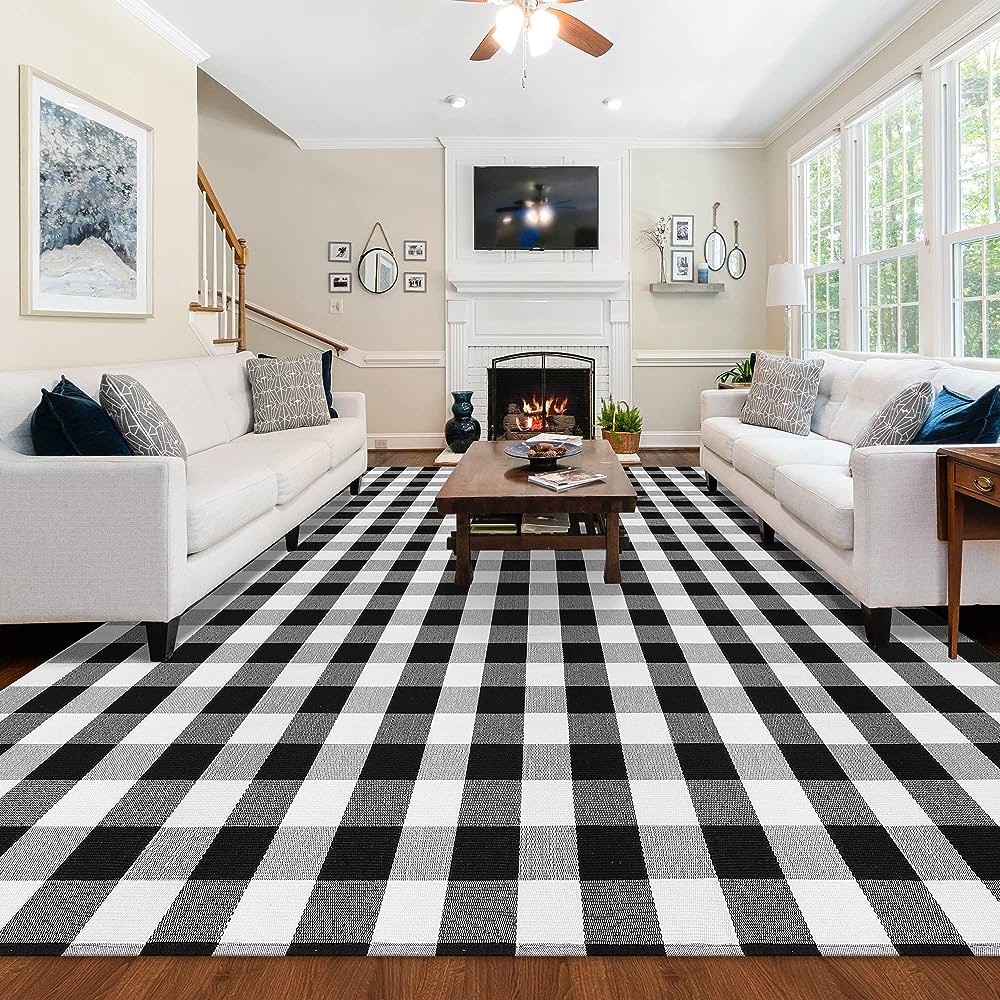Design elements have a profound impact on our minds, affecting our emotions, cognitive processes, and overall well-being. Checkered rug designs, characterized by their alternating squares or rectangles, have a unique influence on the mind. In this essay, we will explore how checkered rug designs influence the mind, examining their effects on visual perception, cognitive processing, emotional states, and spatial awareness.

Visual Stimulation and Attention Capture
Checkered rug designs have a remarkable ability to stimulate our visual senses and capture our attention. The alternating colors and repetitive pattern create a sense of rhythm and movement, drawing our eyes to the rug. This visual stimulation engages our visual perception and keeps us captivated by the design.
The contrast between the squares or rectangles in a checkered pattern creates a strong visual impact, prompting our eyes to move back and forth between the contrasting elements. This constant shifting of attention captures our focus, enhancing our visual engagement with the rug. Consequently, checkered rug designs create a visually stimulating environment that keeps our minds actively engaged.
Cognitive Processing and Pattern Recognition
Our cognitive processes, such as perception and memory, are influenced by the visual stimuli we encounter. Checkered rug designs play a significant role in cognitive processing by facilitating pattern recognition. The repeating squares or rectangles in a checkered pattern provide a platform for our cognitive processes to engage in pattern recognition and visual analysis.
When we observe a checkered rug, our brains automatically seek patterns and organize the visual information presented. This cognitive engagement enhances our pattern recognition abilities, attention to detail, and visual memory. The intricate yet structured nature of checkered rug designs promotes mental activity and enhances our cognitive processes.
Emotional Impact and Mood Regulation
Design elements, including checkered rug designs, have the power to evoke emotional responses and influence mood. Checkered patterns can impact our emotions by creating a sense of balance, order, and harmony. The repetition and symmetry of the pattern provide a feeling of stability, tranquility, and aesthetic pleasure.
Checkered rug designs can also evoke positive emotions associated with playfulness and joy. The alternating squares or rectangles in the pattern create a sense of movement and energy, invoking a lively and vibrant atmosphere. This playfulness can contribute to a positive and uplifting mood, making checkered rugs an excellent choice for spaces where happiness and liveliness are desired.
Spatial Perception and Illusion of Depth
Checkered rug designs have a fascinating impact on our spatial perception. The alternating squares or rectangles can create an illusion of depth, altering our perception of the space. When we observe a checkered rug from a certain perspective, such as when it is placed on the floor, the pattern appears to converge or diverge towards a vanishing point, creating the illusion of a three-dimensional space.
This manipulation of spatial perception adds a dynamic and intriguing quality to the room. Checkered rug designs can make a room appear larger or smaller, depending on the size and arrangement of the pattern. By influencing our spatial perception, checkered rugs have the potential to transform the way we perceive and interact with our surroundings.
Organization and Focus Enhancement
A well-organized space can have a profound impact on our mental clarity and focus. Checkered rug designs contribute to the organization of a space by providing a structured visual stimulus. The repeating squares or rectangles create a clear and ordered pattern that helps in reducing cognitive load and increasing focus.
This visual organization can aid in concentration and attention to tasks, making checkered rug designs beneficial for spaces where productivity and mental focus are important. By reducing distractions and providing visual clarity, checkered rugs create an environment that promotes efficient cognitive processing and enhanced mental performance.
Conclusion
In conclusion, checkered rug designs have a profound influence on the mind. Through visual stimulation and attention capture, checkered patterns engage our visual perception and keep our minds actively engaged. These designs enhance cognitive processing by facilitating pattern recognition and visual analysis. They evoke emotional responses, regulating mood and promoting positive emotions. Checkered rug designs also impact spatial perception, altering our perception of the space and creating illusions of depth. Furthermore, these designs contribute to organization and focus enhancement, aiding in mental clarity and productivity. By understanding the influence of checkered rug designs on the mind, we can harness their power to create visually captivating, emotionally uplifting, and mentally stimulating environments in our spaces.